Background:
Sometimes posts are made that a rich with opportunities, here’s one such example:

Post Analysis:
In the last sentence of the post the person states:
its also a bit of common sense bigger parts = more cold air coming in = more power
Mk7 enthusiast
I find it amusing when someone refers to aerodynamics as being common sense. This simplistic bigger-is-better viewpoint ties in nicely with a misleading statement on the EQT website for the Blaze Performance intake.
On the page the company states:
The Blaze Performance Turbo Inlet Flange features a 74mm inside diameter at the neck and tapers down to 56mm to fit perfectly with any stock machined compressor cover.
Equilibrium Tuning
The Blaze turbo inlet flange with a 56 mm inside diameter is larger than the stock compressor inlet ID which is approximately 49 mm. During my first test of the Blaze intake components, I mentioned this difference.
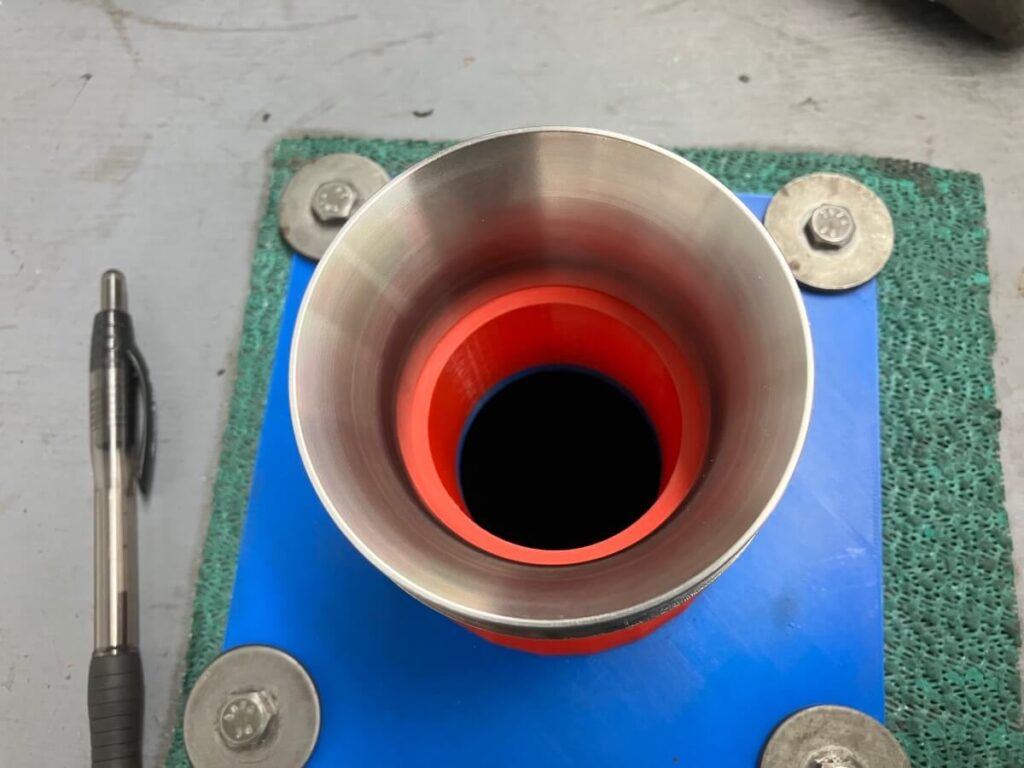
A sudden constriction like this can create pressure losses, or in the case of flow bench testing at a fixed pressure, a reduction in airflow.
A closer match of piping inside diameters should cause less pressure drop, allowing higher airflow at a fixed pressure differential.
In the case of the Blaze inlet flange the company had sent me a design file to print an insert for use with their flange.
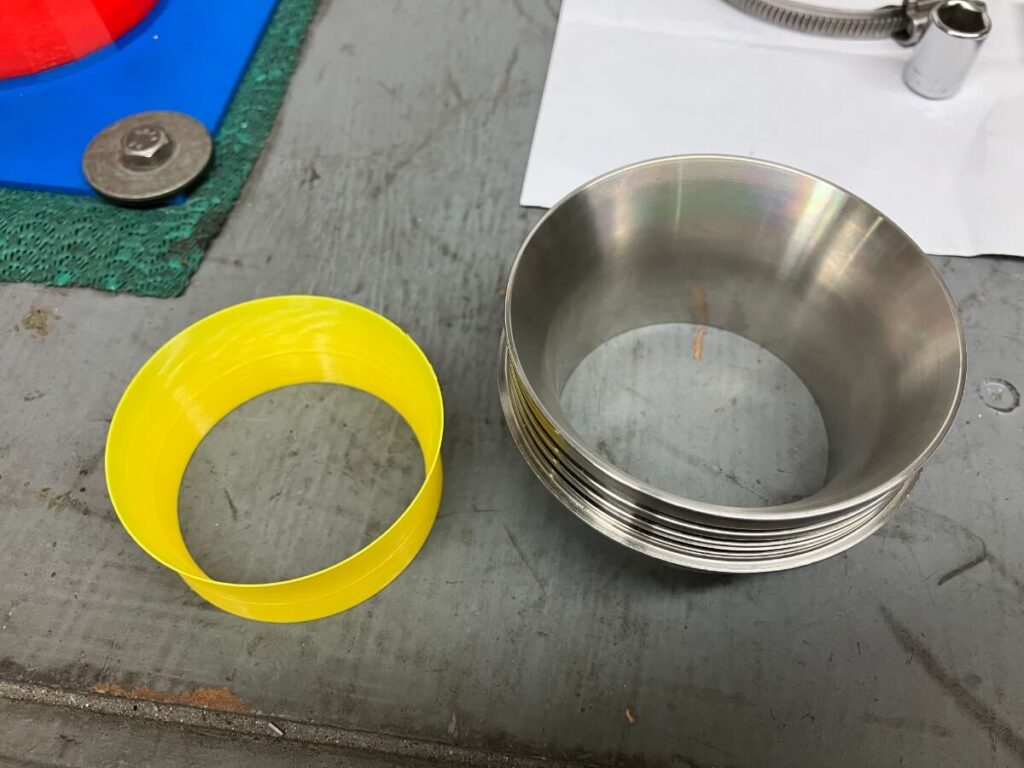
This insert reduces the diameter at the outlet of the flange so that it matches the diameter of the stock IHI compressor housings.
Test:
To find out how much of a difference the flange insert makes, two intake configurations are being tested:
- Blaze Performance ATOM V2 intake system with 100 mm turbo inlet hose and turbo adapter
- Modified stock GTI airbox with Blaze Performance 76 mm turbo inlet hose and turbo adapter
Modifying the stock GTI airbox entails removing the snow guard, replacing the filter with an aFe Dryflow filter, and opening the front of the duct on the driver’s side.
Both intakes are attached to the flow bench using an adapter that is sized similarly to the turbo compressor inlet of the IHI IS20/IS38 turbochargers.
Two test points will be recorded for each intake, one without the flange insert, and the other with the flange insert.
The intakes are tested at 28″ of H2O.
Test Results:
The modified stock airbox flows 370 CFM without the insert and 382 CFM with the insert.
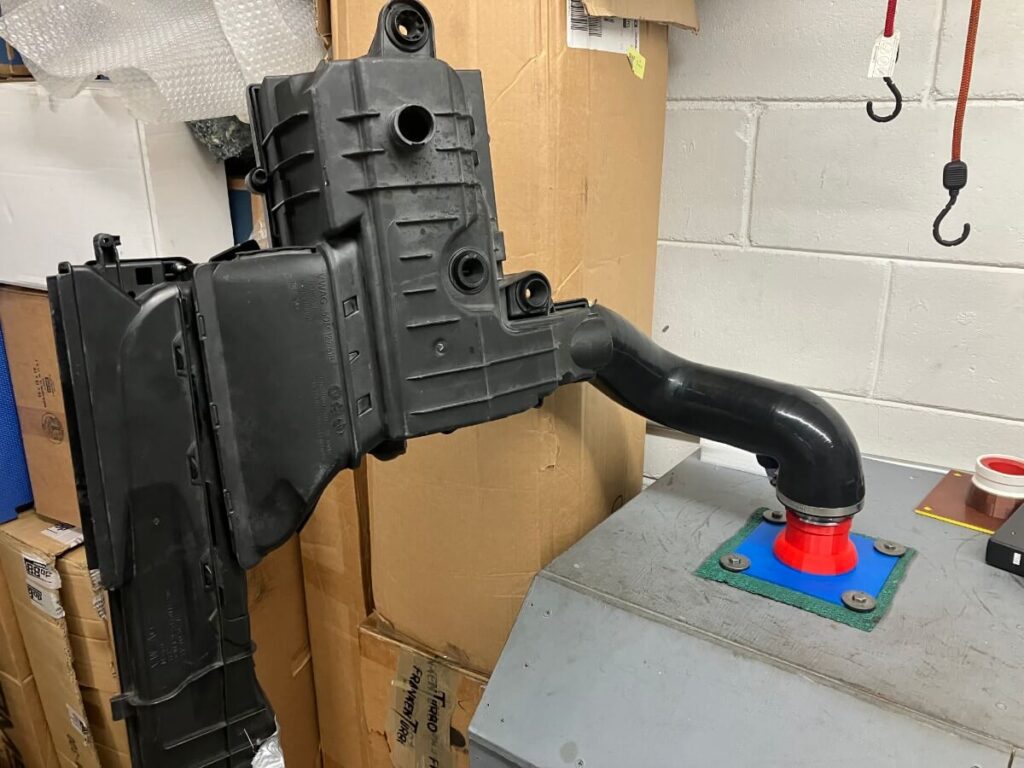
The ATOM V2 intake flows 378 CFM without the insert and 392 CFM with the insert.
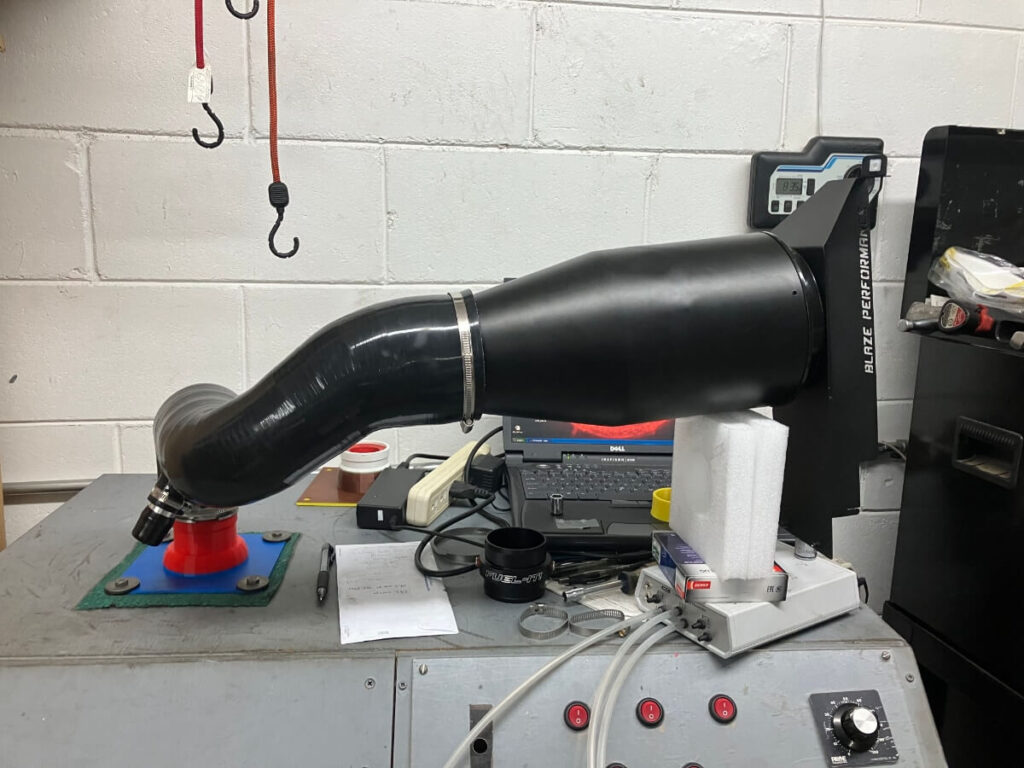
Comparing these results using a bar chart:
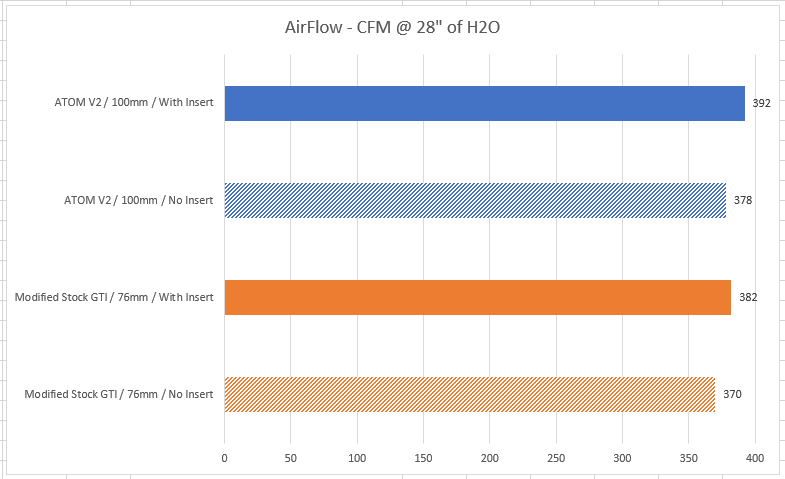
The next tables summarize the airflow changes resulting from the insert (first table), along with the airflow changes resulting from the different air intakes (second table).
| Airflow Change Due to Insert | ATOM V2 | Modified Stock |
|---|---|---|
| Addition of insert | +3.7% | +3.2% |
Both airboxes show airflow increases with the addition of the insert.
The common-sense-based statement by the enthusiast above, “bigger parts = more cold air coming in...” is not supported by these results. With both intakes, reducing the diameter of the turbo flange outlet led to increased airflow.
| Airflow Change Due to Airbox | Without Insert | With Insert |
|---|---|---|
| Modified Stock -> ATOM V2 | +2.1% | +2.6% |
Changing from the Modified Stock airbox to ATOM V2 intake shows airflow gains with and without using the insert.
Notably, the insert makes a greater effect on airflow than changing the rest of the intake system.
Evidence:
Turning back to the comments made by the enthusiast regarding the existence of evidence that supports the claims EQT is making about the Blaze Performance intake. They state that:
the results and information James At EQT and EQT has is probably based on the European market and people who have been able to access these products before they got to us, EQTs results may not be in and may be pending but the information is out there…
Mk7 Enthusiast
Ah, the ever-hopeful “the information is out there...”

Starting with “probably” (the hypothesis) and ending the same sentence with the determination that “the information is out there” demonstrates a degree of naivete that is an enabler for companies to get away with making baseless claims – thumbs up and a like for that from James At EQT.
There’s also this bit when it comes to selling a product and “working on” getting data in support of claims later:
The Commission emphasizes that as a matter of law, firms lacking a reasonable basis before an ad is disseminated violate Section 5 of the FTC Act and are subject to prosecution.
Federal Trade Commission
Conclusion:
If you plan to use the Blaze Performance intake parts with an IHI turbocharger, or another turbocharger that uses the same size compressor housing inlet, be sure to also get the insert for the turbo flange. Not doing so drops the performance of the intake down to that of a modified stock GTI air intake.


